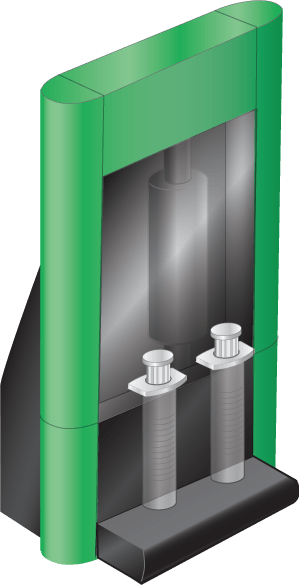Are you happy with traditional syringe filling methods? The truth is that there are several ways to accomplish filling a syringe in manufacturing. Some methods are better than others, and unfortunately many companies are slow to change. Traditional techniques are subpar and it is worth examining your existing processes to see what can change.
Here’s a look at what’s wrong with traditional syringe filling methods and what can be done to correct these problems:

Get to Know Traditional Syringe Filling Techniques
During the syringe filling process, most people will fill through the large end of the syringe and then insert the piston, having to vent the air trapped between the piston and fluid. The problem with this approach is that you either have a small bubble of air or you go too far pushing fluid past the piston seal which eventually allows fluid to leak past the piston.
Work on Eliminating Air Voids
Eliminating these air voids is an important part of the manufacturing process. An air pocket that passes through the dispense tip can “spit” and result in an incomplete dispense which will result in a rejected part. Air pockets will cause a spring-like compression in the fluid forcing an extended stroke length which increases cycle time.
There’s a Better Way to Fill Syringes
The better way to approach syringe filling is to purchase the syringes with the piston pre-plunged to the bottom of the syringe and fill through the luer lock or the small end of the syringe. This way, a 90-degree luer to luer adapter can be attached to the syringe filling system. Operation is very straightforward.
The operator simply attaches the syringe with the pre-plunged piston onto the 90-degree luer with a twist of the wrist. The incoming fluid simply pushes the piston up the barrel as the fluid fills.
When you consider eliminating the time for an operator to insert the piston and the time spent venting air, filling through the nose maintains and sometimes even increases syringe filling throughput.
As you can see, traditional syringe filling techniques fall short. There’s a better way! Please contact Fishman Corporation for more information.